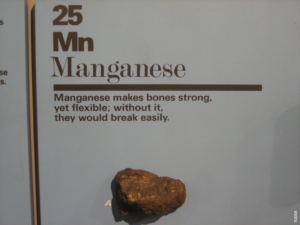The Hidden Culprit: Material Fatigue in Bones and Joints
Imagine a bustling city with skyscrapers reaching towards the sky. These magnificent structures are built to withstand the test of time, but even the mightiest buildings have their limits. Just like these towering buildings, our bodies house a complex network of bones and joints that provide support, agility, and strength. However, have you ever wondered what happens when these vital structures start to deteriorate? The answer lies in a phenomenon known as material fatigue.
Unveiling the Culprit: Understanding Material Fatigue
Material fatigue refers to the weakening and eventual failure of a material under repeated or cyclic loading. In the context of bones and joints, it is a progressive process that occurs over time due to repetitive mechanical stress. Our bones and joints are constantly subjected to various forms of stress, such as weight-bearing activities and repetitive motions. While they are designed to withstand these forces, they are not invincible. Over time, the accumulation of micro-damage weakens the structure, leading to material fatigue.
The Silent Enemy: Signs and Symptoms
Material fatigue in bones and joints often goes unnoticed until it reaches an advanced stage. However, there are certain signs and symptoms that may indicate its presence. Persistent joint pain, stiffness, and swelling are common indicators of material fatigue. Additionally, reduced range of motion, difficulty in performing daily activities, and increased susceptibility to fractures may also signify the onset of this condition. It is crucial to pay attention to these warning signs and seek medical attention to prevent further deterioration.
The Battle Within: Factors Influencing Material Fatigue
Several factors contribute to the development of material fatigue in bones and joints. Age plays a significant role, as the natural aging process diminishes the ability of bone tissue to repair itself. Additionally, lifestyle factors such as obesity and sedentary behavior can exacerbate the risk of material fatigue. Poor nutrition and inadequate intake of essential nutrients like calcium and vitamin D also contribute to bone and joint deterioration. Understanding these risk factors can help individuals take proactive measures to mitigate the effects of material fatigue.
The Road to Resilience: Preventing Material Fatigue
While material fatigue is an inevitable part of the aging process, there are steps one can take to promote bone and joint health. Regular exercise, including weight-bearing activities, helps strengthen bones and improves joint flexibility. A balanced diet rich in calcium, vitamin D, and other essential nutrients provides the building blocks for healthy bones. Maintaining a healthy weight and avoiding excessive stress on joints can also help prevent material fatigue. Lastly, it is crucial to listen to your body and seek medical advice if you experience any unusual or persistent symptoms.
Post
Post
Conclusion: Protecting the Foundation
Material fatigue in bones and joints is a silent enemy that can gradually impair our mobility and quality of life. By understanding the factors contributing to its development and taking proactive measures, we can protect and preserve these vital structures. Just as architects and engineers continuously strive to improve building materials and designs, it is crucial for us to prioritize the health of our bones and joints. After all, they are the foundation that allows us to explore the world and embark on incredible journeys.



